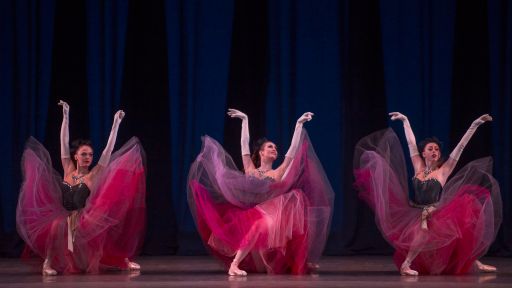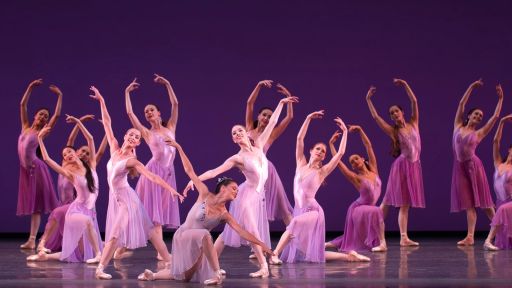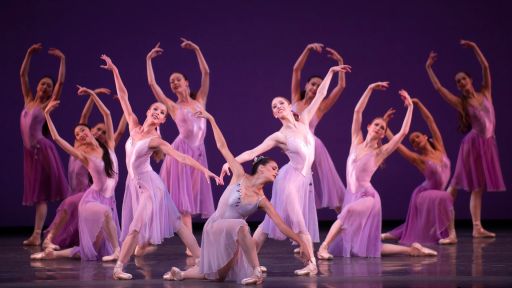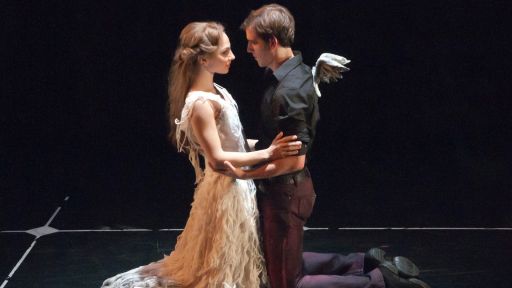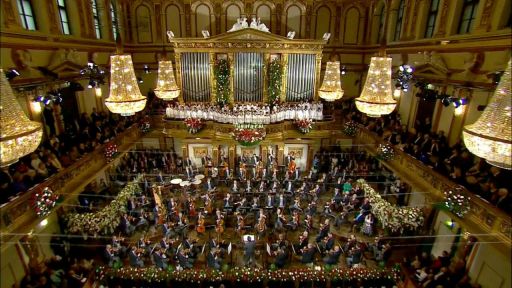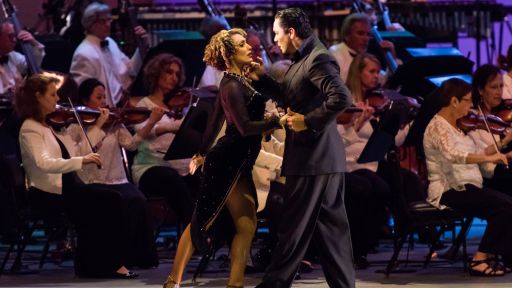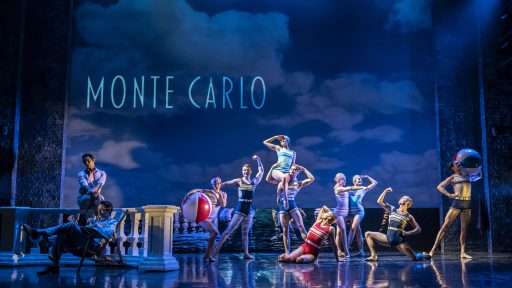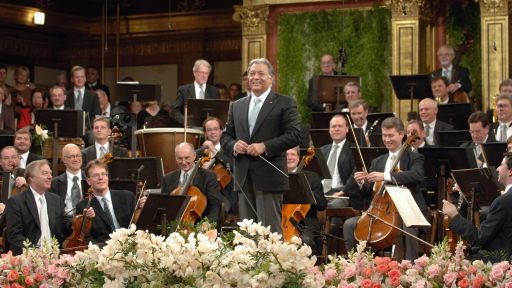TRANSCRIPT
Peter, it's great to see you.
Thanks for joining us.
Thank you.
So, let's talk about your long-time association with Balanchine.
Yeah.
You worked with him as a professional dancer.
You also were co-ballet masters of the New York City Ballet for a short period of time.
What kind of influence did he have on you?
He had more influence on me than anybody else other than my mother.
[ Chuckles ]
I'm happy to hear that.
Yes.
In every way.
I don't even know where to begin, you know.
He educated me on so many levels.
You know, I often think if I had never met him, my life would have been totally empty.
What was it in you that he drew out that no one else had drawn before?
When I was about 16, 17 years old in Denmark and I had yet to become an apprentice in the Royal Danish Ballet, and I was so dismayed about the people in charge.
I was contemplating leaving the world of ballet.
And then when I was, luckily, 21 when I met Balanchine, my life changed basically in the two or three days I spent with him.
I thought, 'Oh! There's hope.
There's hope for the world of ballet.'
Not only is he a great choreographer, brilliant mind, smart, funny, endearing -- I mean, he had everything that you would want.
And it transformed me, and then he invited me to America, and I jumped at it, and the rest is history, as they say.
What was he like to work under as a choreographer?
You couldn't wish for any better leader.
He was never harsh.
He was never rude.
He was never cruel.
He was so kind.
He made you want to dance.
He was a leader, great leader.
But the most important part of him was his human qualities to me.
I've spoken with dancers before who say that part of his genius was his background in music.
His father was a composer.
He started playing piano when he was 5.
And one of the remarkable things about him was, because of his musical knowledge, he could break down an orchestral score and more easily translate the music to dance.
Did you see that?
Absolutely.
You know, he would be standing in a studio in front of dancers, and he would choreograph, and, I mean, so often he would go to the piano and he would look at the score.
'Ah!'
And that gave him the next step, the next combination.
I was fascinated to see some of Balanchine's comments about what ballet should be, and he said, 'Ballets often have stories in them, but that's really not the point.
It's the visual spectacle and the illusion of that for the audience.'
You see it that way?
His priority making a ballet was the audience.
He used to say to me, 'You have to understand the reason you're choreographing is for their enjoyment.
So you have to make sure that you show them where to look.'
Every ballet that I've danced or watched or coached of his, you see it constantly, his true respect for the viewer.
And I don't see that often in other choreographers.
It's very much about themselves.
Balanchine once said that American dancers inspired some of the striking lines in his choreography.
So what's different about American dancers?
[ Sighs ] Well, I don't know whether I would generalize.
It's just that we train our own dancers.
We're the only company who train our dancers.
98% of our dancers are homemade.
We make them right across the street as opposed to every other ballet company in the world.
There's a few imports still, but they're primarily Americans.
But it's more the aesthetic.
They like what we do.
They are drawn to who we are and how we dance.
So they want to come here.
And is there an American style, a Balanchine style?
You could argue that.
There's a balance and an aesthetic, and that's what's drawing young people.
'Cause I often ask young people when I hire them at 17 years old.
'Okay, tell me, why do you want to join the New York City Ballet?
Is it because it's famous, it's in New York, or is it something else?'
And they all go, 'Balanchine.'
Imagine.
He's been dead for 30 years.
People still want to dance his ballets.
Wow.
What a tribute.
It is an amazing tribute.
Wow.
It's like Shakespeare.
You had the great joy of being in Paris when 'Great Performances' was on the ground filming the New York City Ballet to perform for Parisian audiences.
Well, I chose the program because it was our closing night in Paris.
And I wanted the French to see how Balanchine appreciated French music.
It's Gounod, Charles Gounod, it's Maurice Ravel, and it's Georges Bizet.
It doesn't get better than that.
Describe to us what our audience is gonna see.
Ah!
They're gonna see 'Walpurgisnacht' by Gounod, the Balanchine choreograph for the Paris Opera Ballet and that he subsequently brought to the New York City Ballet because it was such a big success.
♪♪ It's complete, totally abstract.
It has nothing to do with the Faustian legend.
It has to do with the music, a response to the music.
Like 36 girls flying all over, the hair like this.
And he was so nervous.
I remember the premiere at the New York City Ballet when he brought it because he needed something opening night.
And he stood backstage, and I was right next to him, and he was so nervous whether it would work.
And the curtain went down, and the roof came off.
And the public loved it.
And so he ran it like a movie because it was so popular.
♪♪ 'La Valse.'
'La Valse' is great Ravel score.
It's almost impossible to describe.
It is one of the greatest Balanchine works because it has drama.
It's not an abstract ballet, per se.
It has a suggestion of a story, but it doesn't really tell a story, although it does.
Balanchine insisted you don't need to explain people what they're seeing.
Let them find out themselves.
It's this young girl who comes to this ball, innocence personified, and encounters this figure of death.
And, of course, all hell breaks loose and doom sets in, and the rest you have to wait.
You have to come and see.
Who will we see in 'Sonatine'?
'Sonatine' you will see Megan Fairchild and Joaquin De Luz.
And, you know, I have a story of every ballet you can imagine.
And Balanchine used to describe 'Sonatine' as perfume.
I mean, I danced it, and I would say to him, 'What do you mean by perfume, Mr. Balanchine?'
He said, 'It's delicate.
It's like the music.'
It's beautiful Ravel piano score.
And he said, 'Curtain goes up, [Sniffs] you sense the aroma.
And then curtain goes down, [Sniffs] disappears, gone.'
♪♪ 'Hopefully you'll remember.'
That's how he described it.
So interesting.
Yeah, his anecdotes are wonderful.
It's like perfume that evaporates when the curtain goes down.
And then there is 'Symphony in C,' which is really worth noting because of Balanchine's ties to Paris and the amount of time he spent in his professional life there.
'Symphony in C,' which he choreographed for the Paris Opera Ballet I believe in 1947, and he called it 'Palais de Cristal,' is perhaps one of the three greatest ballets he's ever done.
And I'll tell you what I think of it.
I know it as a dancer, but having watched it since Mr. Balanchine passed as sort of custodian, taking care of it, rehearsing it all day long, it is perhaps the most difficult ballet to cast of his entire repertoire.
Why is that?
Because you need four couples, four movements, and you need four unbelievable couples who can excel.
♪♪ We have Tiler Peck, we have Tess Reichlen, we have Alston Macgill -- she's an apprentice -- and Brittany Pollack.
And then, of course, the boys, Andy Veyette, Tyler Angle, Anthony Huxley, and Taylor Stanley.
And at the finale, pull it off.
And it is very difficult to get four people who can do this at the same time.
I mean, this is a dream cast.
What are you hoping our audience will get out of these four performances that they'll see in 'Great Performances'?
Wow.
I mean, for the initiated, they will go... 'But of course. It's the best.'
And for the uninitiated, for those who will be introduced to our company for the first time perhaps, go, 'Wow!
The scope, the differences of those four ballets by the same man, all French music, this company is rich.
We have to go and see them.'
And it's a privilege for us to be able to honor that legacy.
You know, nothing gives me more pleasure to hire those young 17-year-olds, and when I put them on the spot, 'Why do you really want to come here?', and when they tell me it's Balanchine, it's like, I mean, 'Good for you, George.
You're relevant.'
And so are you.
Thank you, Peter.
Pleasure.
Really appreciate it.

